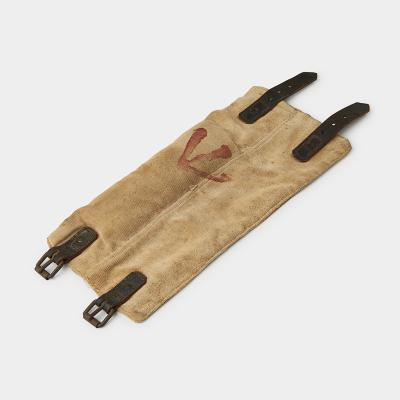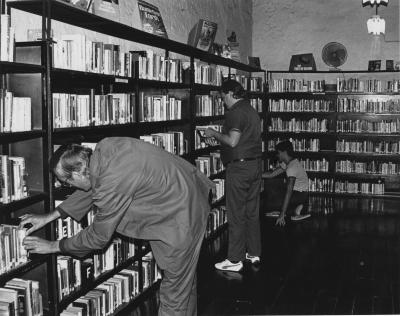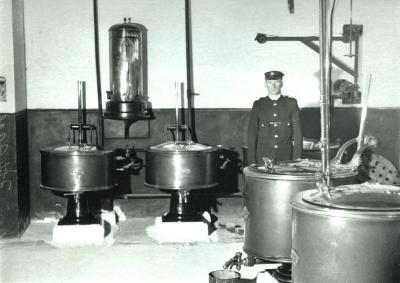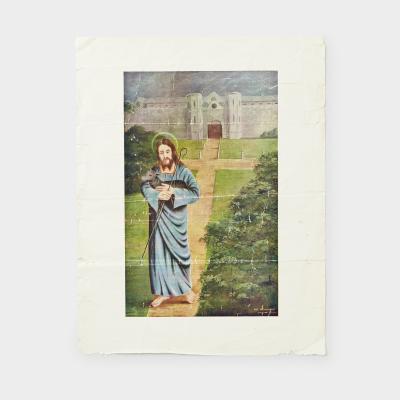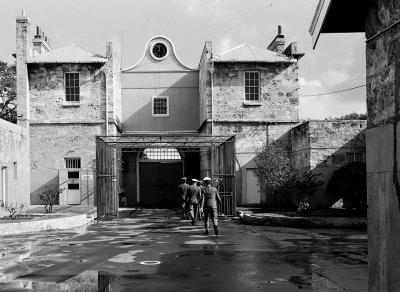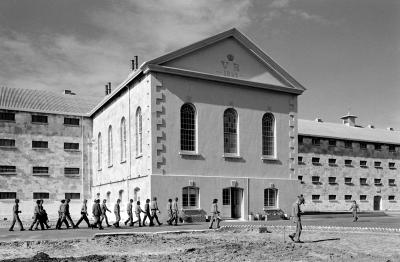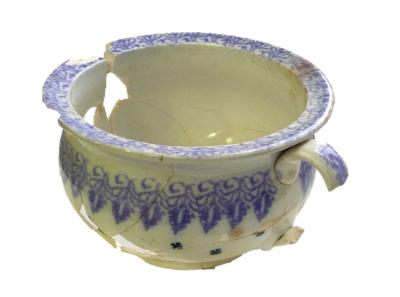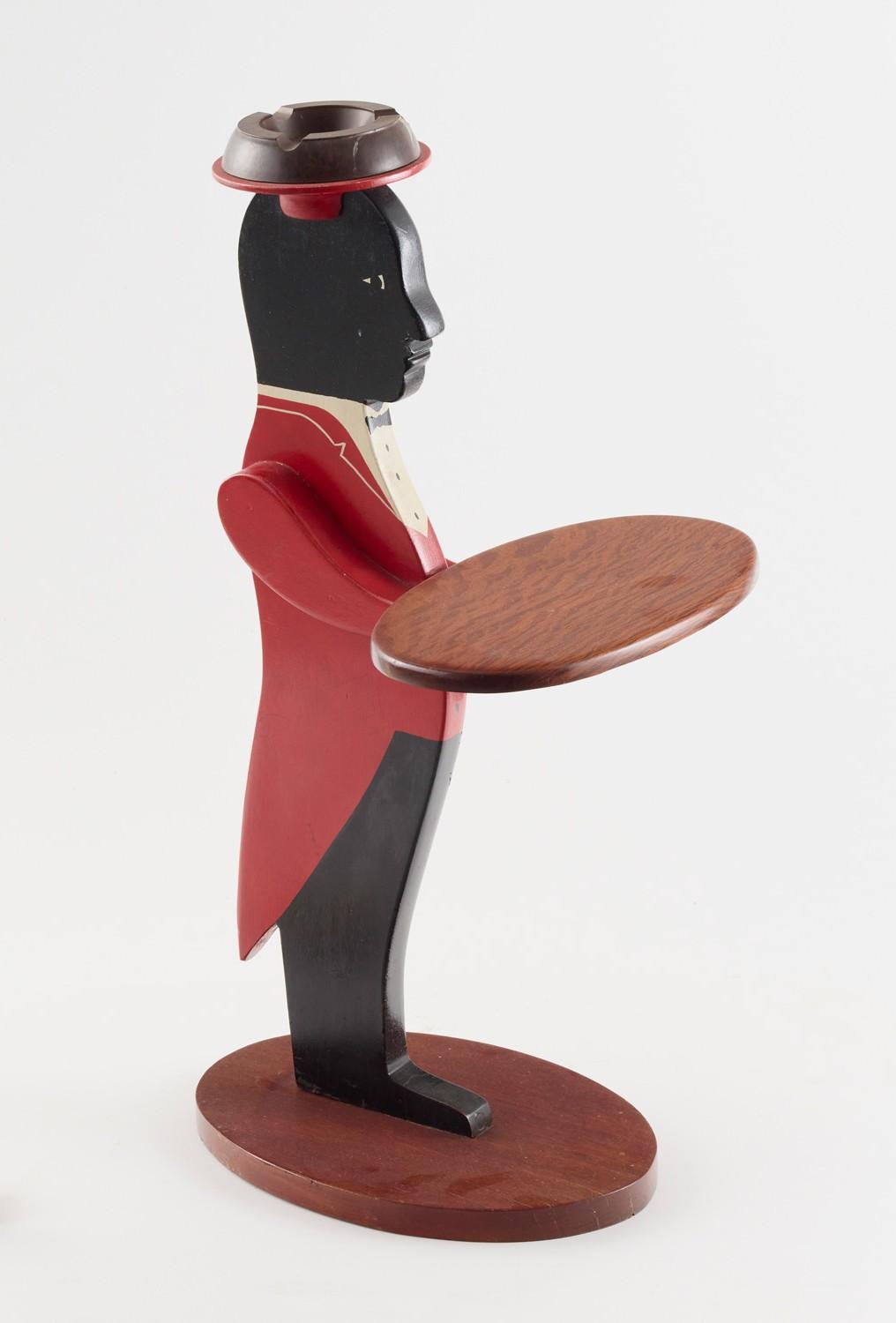SMOKERS' STAND
Large, painted wood, novelty smokers' stand. Consists of a thin, wooden, silhouette of a man cut out from a flat piece of wood and painted on both sides to represent a waiter depicted with a black head and face, white shirt front, black bow tie, red swallow-tail long-sleeved coat, black trousers and black shoes. The figure is attached vertically by countersunk wooden screws to the centre of an oval wooden platform base. Thin, wooden arms have been added on the left and right side of the figure. They are outstretched holding a horizontal, oval shaped wooden tray. The tray is attached beneath by wooden screws, and forms a small table for holding drinks or cigarettes. Both the base and the tray are finished in high gloss, showing a dark-grained wood, possibly jarrah. The figure has a small, red painted, wooden disc attached to the top of its head, upon which rests a brown Bakelite, circular ash tray. The ash tray can be removed from its platform, for ease of emptying and cleaning.
Donated by the nephew of former Manual Arts instructor Gordon Bain, who worked at Fremantle Prison during the 1940s and 1950s.
Details
Details
Workshops were a necessary part of the Convict Establishment and were some of the first buildings constructed on site. The Carpenters Workshop was originally a wooden building at the front of the Prison until 1858, when it was moved next to the Blacksmith’s Shop at the south-eastern corner of the site. Whilst carpentry was regarded as a difficult skill to learn, and not many of the convicts were trained to work with wood, carpenters were essential in the new Establishment’s construction. Convicts were trained to lay the joists, floors and roof, and build the scaffolding required around the new Prison buildings. They also built the wooden portable houses used by road parties, wagons, trucks and coffins.
In the later years the Carpenters’ Shop was reputedly one of the most productive shops in the Prison. Apprenticeships were relatively easily to obtain, with prisoners serving four years or more. The apprentices who worked in the shop and demonstrated an aptitude for the job were eligible to apply. In the Carpenter’s Shop, along with an instructor, there would be several prisoner tradesmen, allowing the apprentices an opportunity to learn. The work varied from a regular production line of all the cell furniture used at Fremantle Prison, to the finer art of teak fittings for yachts and quality handmade furniture.
When Fremantle Prison closed in 1991 the Carpenters’ Shop was still a productive prison industry. The cell furniture in the Fremantle Prison Collection, made in the Carpenters’ Workshop, was left onsite when the Prison closed in 1991.

